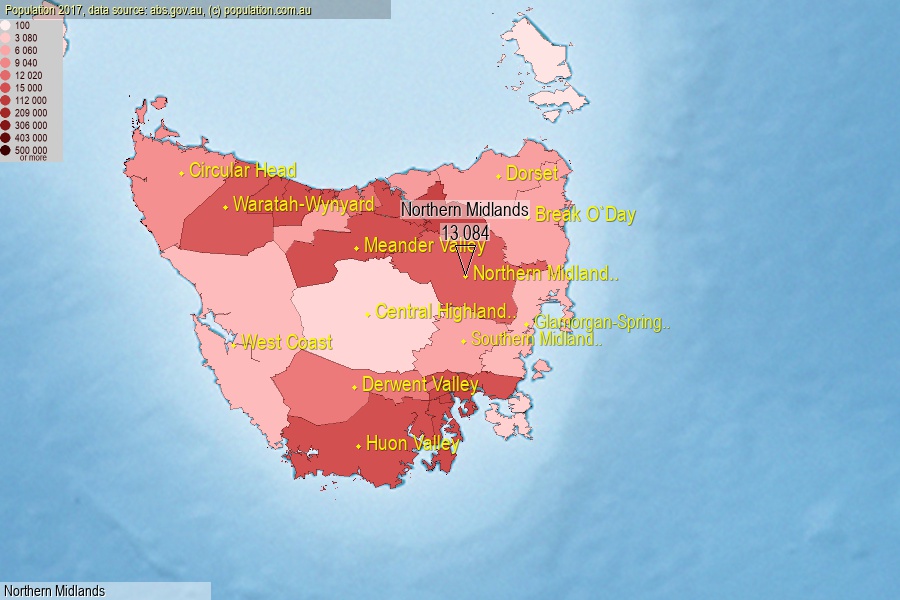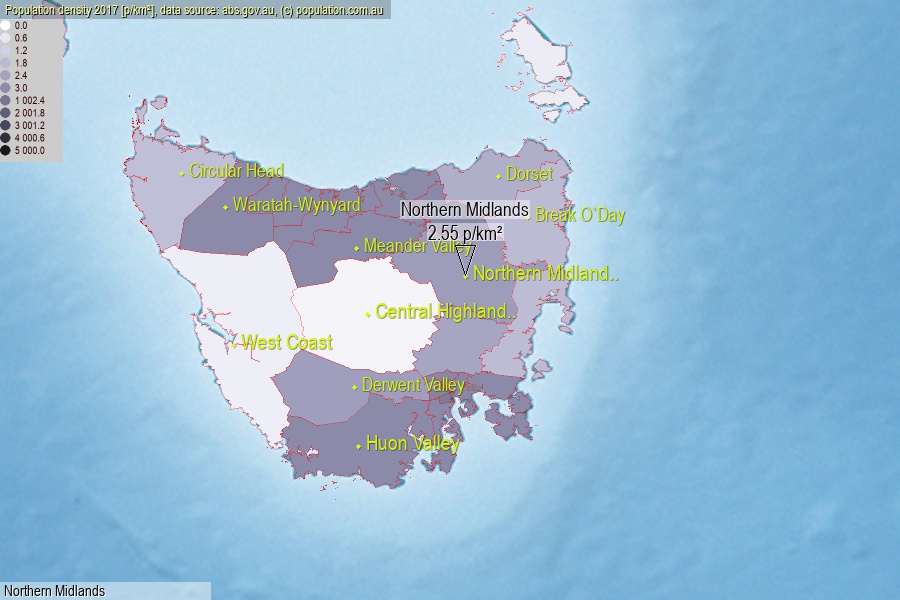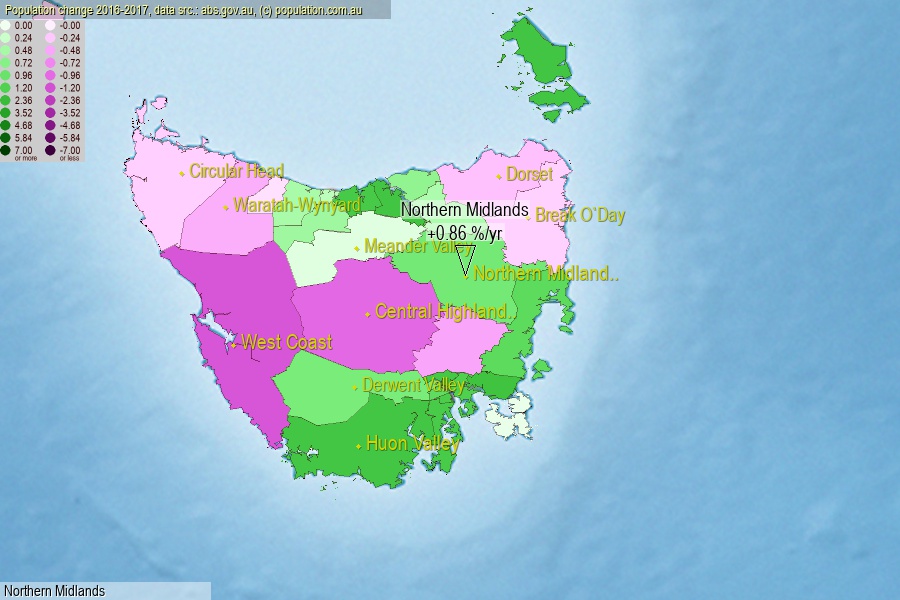 population.com.au
population.com.auLast official estimated population of Northern Midlands Municipality (as Local Government Area) was 13 084 people (on 2017-06-30)[2]. This was 0.05% of total Australian population and 2.484% of TAS population. Area of Northern Midlands is 5 135.30 km², in this year population density was 2.55 p/km² . If population growth rate would be same as in period 2016-2017 (+0.86%/yr), Northern Midlands population in 2025 would be 14 016. [0]



Click to enlarge. Northern Midlands is located in the center of the images.
Population [people], population density [p./km²] and population change [%/year] [2]
[1996-2001] +0.34 %/Y
[2001-2002] +0.51 %/Y
[2002-2003] +0.83 %/Y
[2003-2004] +0.94 %/Y
[2004-2005] +0.80 %/Y
[2005-2006] +1.12 %/Y
[2006-2007] +0.06 %/Y
[2007-2008] +0.20 %/Y
[2008-2009] +0.36 %/Y
[2009-2010] +0.29 %/Y
[2010-2011] +0.43 %/Y
[2011-2012] +0.08 %/Y
[2012-2013] +0.20 %/Y
[2013-2014] +0.42 %/Y
[2014-2015] +0.42 %/Y
[2015-2016] +0.77 %/Y
[2016-2017] +0.86 %/Y
[0] Calculated with linear interpolation from officially estimated population
[1] Read more about LGA and Australian Statistical Geography Standard (ASGS) on abs.gov.au
[2] Population data from Australian Bureau of Statistics (Population and density: 2017; change: 2016-2017)
[3] Digital Boundaries: Australian Statistical Geography Standard (ASGS) 2016.